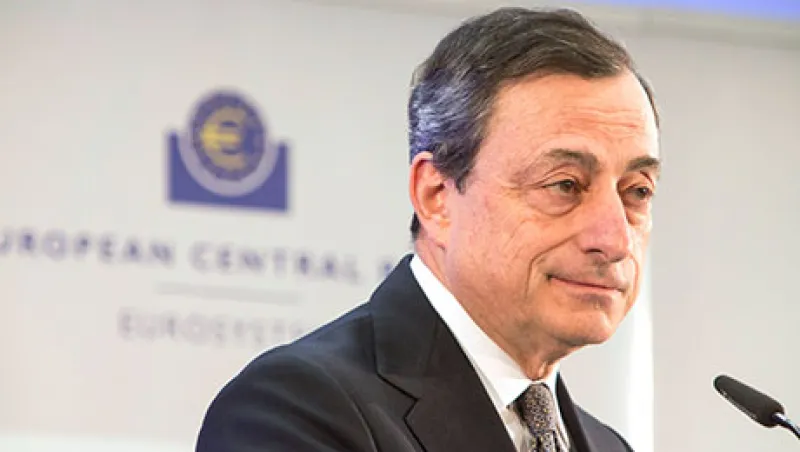The European Central Bank launched its landmark quantitative easing (QE) program earlier this month, with the first purchases of sovereign bonds anticipated to support the euro zone’s accelerating recovery. Indeed, an upbeat Mario Draghi, the ECB president, said that the controversial €1.1 trillion ($1.2 trillion) program, announced in January, would help support an economy that has suffered years of crisis and stagnation, and promote a recovery that would “broaden and strengthen gradually.”
Cheered by its own measures and by lower oil prices, the ECB has since become more confident. Yet we need to assess what will happen to the economy when oil prices rise again and that temporary boost to the economy begins to diminish. What’s more, we need to assess what will happen when excess liquidity and a distortion of asset prices — an inevitable product of the ECB’s extensive QE measures — contaminates the region. Even though most economists think otherwise, the ECB needs to plan now for how it will exit QE as, at the moment, it is a prisoner of expansionary monetary policy.
When the Federal Reserve implemented its most recent round of QE, in December 2013, that served merely to speed up an economic recovery that would have taken place in any case, because of the reindustrialization of the U.S., the country’s strong cost competitiveness and its capacity to create jobs. When the recovery — resulting from other fundamental causes — took place, the Fed stopped the QE program without any difficulty and without jeopardizing any economic gains.
The euro zone’s situation is very different. There is no sign that solid and sustained economic expansion can be expected beyond the short-term stimulation of demand provided by the fall in oil prices. In particular, nothing suggests that we will see an upturn in corporate investment. This means that either the ECB will not be able to exit QE, or if it does exit the program — for example, because the price of oil rises and pushes up inflation — it will deliver a strong negative shock to the economy and financial markets. In the absence of a growth driver such as QE, Europe will experience a rise in interest rates and risk premiums, loss of growth and solvency problems.
Undoubtedly, the Fed’s monetary policy boosted household demand from 2010, thanks to wealth effects generated by the rise in share prices and then in property prices. The pickup in corporate investment and industrial production was not related to expansionary monetary policy, however, but owed instead to fundamental characteristics of the U.S. economy: strong cost competitiveness and an increase in energy production. The upturn in investment fed an autonomous growth momentum that was not dependent on monetary policy. As a result, the Fed was able to wind down QE in late 2014 without any difficulty. Certainly, wealth effects and QE helped speed up the recovery in the U.S., but it was easy to exit QE because of the real recovery that took place.
In the euro zone, by contrast, the exit from QE promises to be difficult. Although growth is predicted to be strong in 2015 and 2016 because of the fall in oil prices, this stimulus will only have temporary effects. There is still no sign of a sustained real recovery. Corporate investment in particular continues to stagnate.
We therefore need to ask what the ECB should do if a solid recovery does not take place. It can decide not to exit QE, as it is clear that once the positive effect of lower oil prices has faded, growth will once again weaken. Alternatively, it may decide to exit QE to limit monetary creation, or because a rebound in oil prices pushes inflation to the vicinity of 2 percent.
In the former case, the ECB would be caught in an irreversible trap of expansionary monetary policies. In the latter, an exit from QE amid weak expansion would cause a shock as financial markets no longer receive liquidity from the ECB. Indeed, there would be a rise in long-term interest rates, a rise in risk premiums on corporate bonds and bank bonds and a fall in the stock market. Ultimately, this would lead to a serious risk of an economic crisis, because of a rise in the economy’s financing cost, and a financial crisis, as holders of assets bought at low-risk-premium levels suffer capital losses.
It will not be easy for the ECB to exit QE. All the more reason, then, to start planning now.
Patrick Artus is chief economist at Natixis in Paris.
Get more on macro .






